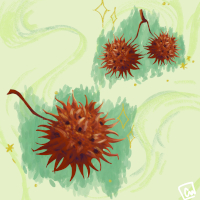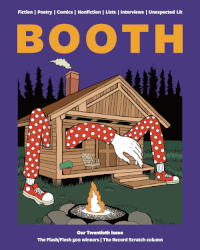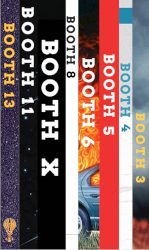Fiction by Jennifer A. Howard
By the time the days got so short in Lakeland, Florida, that the Detroit Tigers could only practice in the sunshine from eleven till one, the birds were thoroughly confused. Instead of heading north for spring, they flew east and south-southwest. And then up. The arctic terns, accustomed to long treks from Greenland to Antarctica and back every year, were the first to reach the moon. The waxwings arrived next, landing atop micrometeoroids and other space debris to mate and send on new generations. The crested honey buzzards and loons followed. After not many years, there were no birds at all on earth.
That’s the story my husband and I told our daughters. In truth, nobody knew why the birds all died while the rest of the world – caribou and dandelions and Chinese trumpetfish and fruit flies and people – survived the blackout. Now, the world’s teenagers have never seen a live seagull, though it took a good while after the birds were gone for folks to stop saying everything tasted like chicken.
After their dad died in a torchbearing accident, I had to define “blue jays” and “orioles” and “cardinals” to my girls by myself. Eagles I could remember and sketch for the girls when they were little, and ravens and sea hawks, though only in team-colored cartoon profiles with go-get-em looks in the one eye. When my oldest got picked up by the minor league Toledo Mud Hens, I had to do some research. Mud hens, aka the American coot, looked like white-billed ducks but tasted – the histories said – more like crane. They would steal other birds’ food and feed it to their prettiest chicks and sometimes drop their eggs in strange nests for someone else to raise. In broad daylight! The collective was either a cover of coots or covert of coots. A “t,” I guess, was either added, or it was lost, along the way.
But I told the girls the mud hens had been fierce mothers, kind sisters. Loyal. Territorial. Funny. Expansion teams never adopted mascots that fit the new, dark world. No Duluth Night Monkeys or Spokane Sugar Gliders. No hockey teams with evening primrose or luminescent fungi logos. No middle school gerbil mascots, or hermit crabs or paradoxical frogs. Not even the wombats and hedgehogs found clubs to represent. Phoenix is still the Suns. The Avalanche did change their name after the growing snowslide death tolls, but they went nostalgic (and without regard to national boundaries) when they came out as the Colorado Puerto Rican Woodpeckers.
Today, my Mud Hen daughter has been pitching fastballs, over and over, asking for trouble. She’s angry that boy made her do the leaving by going to bed with the center fielder when they were out of town for an away game. She’s even angrier he left like she wanted him to. Her sister next to me in the bleachers whispers, Change up, change up. She doesn’t mix it up, though. The batter, he connects, and the ball goes flying, whistling out of the field into the dark of the stands – my sweet kid – like it’s got somebody to catch up to.
My husband died on a commuter route, just trying to get nurses to work safe. Or he was getting one nurse to work safe. Or, he didn’t even die. I’m not sure.
Now that it’s dark all the time, I’ll tell her after the game, we can’t know if anybody is really gone, or if we just can’t see them right now. The truth is we can’t know much anymore, we can’t make out anything clearly, or in real color. Black twig borers ate up all our coffee beans, so we never really feel awake. We talk to each other like we’re all still mid-dream, half-dreamt, and we never get all the way out of our pajamas or let down our nighttime ponytails. We reach back for talismans that no longer represent us because we can’t see where we’re headed. Maybe all that’s right anymore is getting under the covers with whoever’s next to you, even if the person you love is somewhere else, and an occasional trip to the ballpark: to reel and stagger in the floodlights, maybe to even the score.



